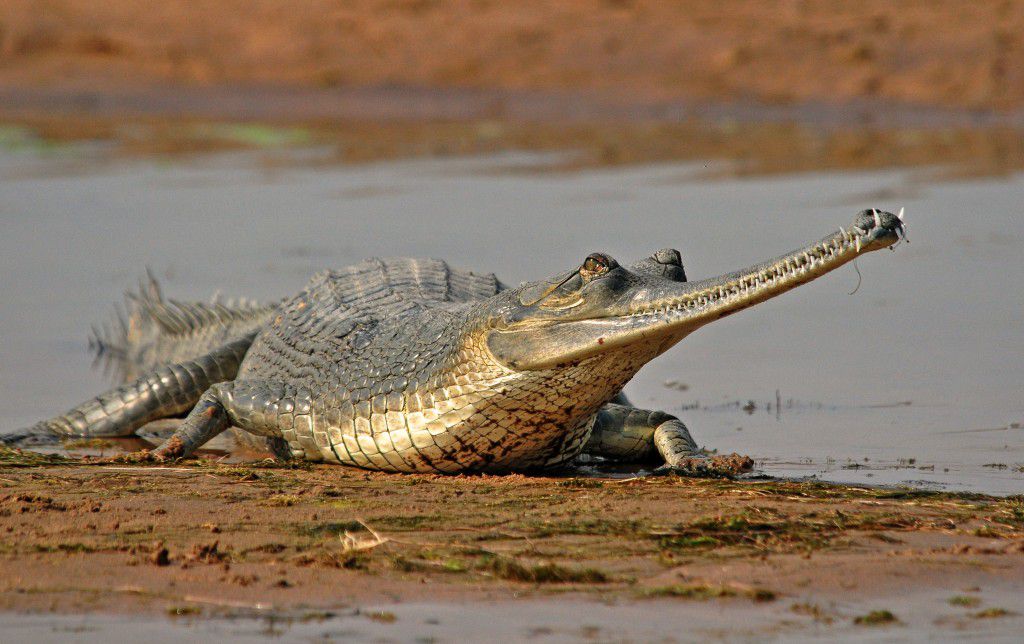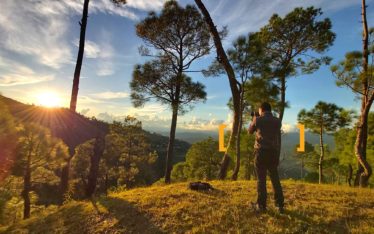


 The Park
The ParkWhat’s common between a cricket test match, an intensely smoky single malt and Corbett National Park? Plenty actually – they can all test your patience, are acquired tastes and even so are strangely favored by the ‘connoisseurs’.
Though named after the legendary hunter turned conservationist Jim Corbett, strangely enough only one of the maneater tigers he shot, the Mohan Maneater, was from these forests. Blessed with gorgeous landscape including forests, rivers and hills outside the park, Corbett as a destination today is far bigger than the national park itself. Thanks to its proximity to Delhi and its natural beauty, tourists coming to Corbett are not limited to real wildlife lovers only, and there is a range of fun and adventure activities that can be enjoyed.

Sunset view of Corbett
Corbett is the only major tiger reserve to offer accommodation in forest rest houses inside the park. If you are not looking for luxury, staying inside is a great experience for wildlife and nature lovers. However, the number of rooms is very limited and they get sold out like hot cakes. The majority of visitors stay in resorts outside the park.

Tiger at Corbett National Park
Sightings of wildlife, including the tiger, are often more difficult here than in some other national parks – yet for any true wildlife lover who visits, it sooner or later becomes an addiction. So what makes it so special? Well, there’s the stunning landscape, nestled between the Himalayan foothills and the Shivaliks, that is somehow more ‘wild’ than in most other parks. This wildness seems to rub off on the inhabitants of this paradise as well, with Corbett tigers and other wildlife still largely retaining their natural shyness of humans. This means that here you actually have to apply jungle skills to earn a sighting. In terms of bird and animal diversity, Corbett is unparalleled; around 600 bird species have been recorded here, while very few other places have animals and reptiles like the tiger, leopard, elephant, otter, gharial, ghoral and yellow throated marten all present together.

A Gharial in Jim Corbett
So, don’t come to Corbett expecting to see a nonchalant tiger around every other turn – if that’s your gig, you’d probably be happier at a Bandhavgarh or Tadoba instead. But when you do see a majestic male tiger crossing the fast flowing waters of the Ramganga, or a herd of elephants crossing the Dhikala grasslands to drink water at the Ramganga reservoir – take our word, you will be hooked for life as well.

Man eater of Mohan Trail
This is a hike of approximately 8 kilometres through stunningly beautiful reserve forests of Corbett. Best done from Tanhau, the hike is mainly downhill along animal tracks. As you descend through the forest, you will use the tracks frequented by Jim Corbett’s infamous Mohan man-eater tiger in whose erstwhile territory you will roam. Best started early morning; the trail offers great birding and wildlife opportunities and even glimpses of big cats occasionally. However, even on days that the wildlife action is low, the experience of walking through these pristine jungles of Corbett is unforgettable. While jeep safaris inside the national park do provide a higher chance of spotting a tiger, it is quite a different experience to explore on foot virtually the same jungles and with big cat presence all around.


Angling at Bhikiyasen
With angling no longer permitted in the area around Corbett National Park, Bhikiyasen is the nearest destination where one can enjoy this activity. Here the Ramganga river offers the opportunity to go after two internationally prized sport fish – the Golden Mahseer and the Goonch. Both of them can grow to an enormous size, and the Golden Mahseer is known for giving a really tough fight. All fishing is strictly on a catch and release basis.

Tiger at Sunderkhal, Corbett National Park
This village next to the Kosi river, on the eastern boundary of Corbett National Park, is in the path of a major animal corridor. As a result, the Sunderkhal village has many stories of man-animal conflict, most notably of the ‘Sunderkhal Maneater’, a tiger that claimed seven human victims here between September 2010 and February 2011. Hearing firsthand accounts of these incidents sitting in Sunderkhal is very different from reading about them in a newspaper, and helps understand the ground realities of human-animal conflict.

Snow View Point
A drive of about 35 kilometres from Ramnagar leads us to the little village of Kath KiNao. It is a beautiful drive with the buffer forests of Corbett on both sides of the road all the way. After crossing the village of Mohan, the terrain starts becoming hilly and you keep climbing till you reach Kath Ki Nao at an altitude of around 4,000 feet. Once you reach the village, a short uphill walk of about ten minutes takes you to the Kath Ki Nao forest chowky at the top of the hill. The views from here are probably the best in the entire Corbett area – on one side you see the Kosi river winding its way through the valley below, with the forested hills of Corbett all around. On the other side, you see the equally beautiful Ramganga valley below and, if it’s a clear day, the mighty snow-capped Nanda Devi range in the distance. At the chowky, there is a watchtower manned by Corbett Tiger Reserve personnel with a wireless radio, as well as an abandoned building. However, this is no ordinary building – Jim Corbett stayed here while tracking the man-eater of Mohan. The spot where he killed the tiger lies about a kilometre away and Jim Corbett faithfuls come here just to retrace the steps of the legendary gentleman.

Heritage Walk at Kaladhungi
Best known for his classic book ‘The Maneaters of Kumaon’, Jim Corbett has also had a huge impact on conservation efforts, especially with the villagers living near the forests around his village Kaladhungi, also known as Chhoti Haldwani. This Heritage trail, managed by the village folk, provides further insight and experiences of the immense work done by the ‘Gora Sadhu’ as Corbett came to be known later. The walk takes you through to the model village established by Corbett himself, covering the Corbett Wall, and the Jim Corbett Museum with his muzzle-loading gun. Spend some time with the village folk here as you walk a distance of about 3.5 kilometres. The trail should take you approximately 2 hours through lands yet “unspoiled by the hands of man”


